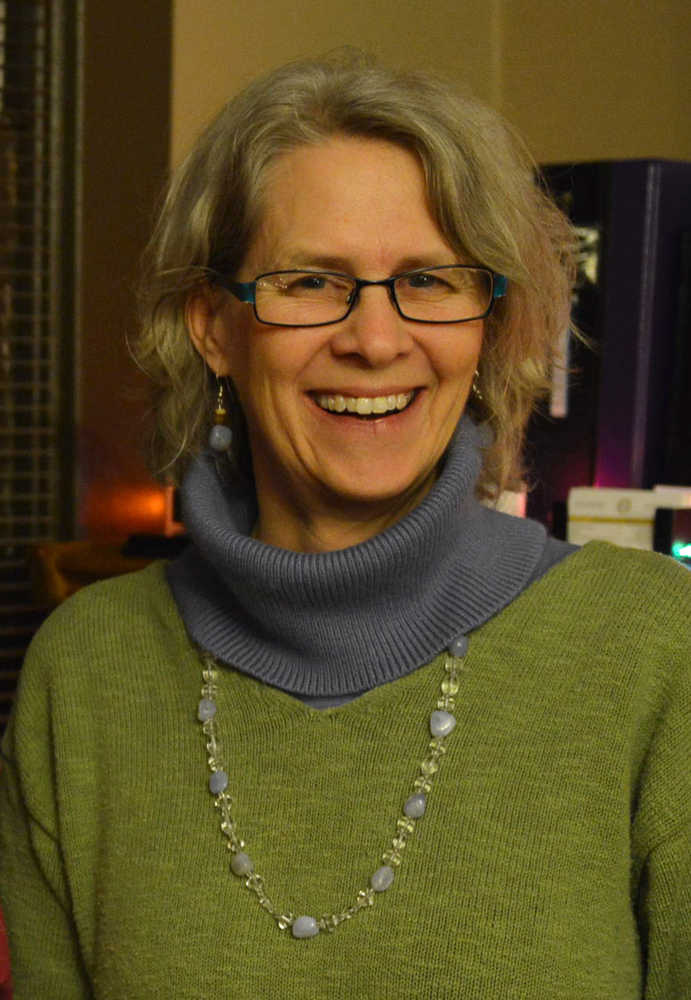SITKA — Male candidates on the fall municipal election ballot will outnumber women more than two to one, a ratio consistent with recent trends in Sitka.
With the closing of the filing period Aug. 5, there were eight men and three women running for mayor, Assembly and School Board, a ratio of 2.6:1. Since 2011, including official write-in candidates, men have outnumbered women 35-17 (2.05:1) in local elections.
The ratio for non-mayoral Assembly seats, at 4:1, is particularly lopsided, but since 2011 there have been about as many women as men running for School Board.
Mim McConnell, who has been mayor the past four years and was on the Assembly three years prior to that, is currently the only woman at the Assembly table, and she’s not seeking re-election this year.
In an interview with the Sentinel, McConnell said she rarely notices the gender imbalance, but does feel Sitkans are missing out by not having more representation by women.
“Most of the time I don’t even think about it. I forget about it. I don’t notice that I’m the only woman at the table during the meetings,” McConnell said. “I do think that women are different than men. I think they bring something different to the table than men and I think the community loses something when they don’t have that perspective.”
Over a 10-year span, the ratio of male to female candidates has been more balanced. Since 2006, 57 men have run for office in Sitka and 33 women. Over that sample period the most evenly balanced candidate roster, by gender, was for mayor (eight men and seven women).
The year that McConnell was first elected mayor, 2012, was one of the few recent years when women candidates outnumbered men. McConnell and Cheryl Westover were running for mayor along with Thor Christianson. Michelle Putz and Phyllis Hackett were elected to the Assembly along with Matthew Hunter. The race also included two other men in Aaron Swanson and Dallas Peavey.
Also in that year, Cass Pook was re-elected to the School Board and Jennifer Robinson won a seat on the board as a write-in candidate.
Since 2012, however, 15 men have run for Assembly compared to only two women.
McConnell said Sitka has enjoyed strong representation, but thinks the community would benefit from more women in policy-setting roles.
“This has been a great Assembly,” she said. “I think we’ve worked well together and been very effective. But I think it’s really important for women to be involved in the commissions and boards and Assemblies.”
Of the 23 positions filled by election between 2011 and 2015, nine went to female candidates. Four were on the School Board, three on the Assembly and two others were in the mayor’s office.
Sitka does see a more even gender balance on appointive commissions (Planning, Ports and Harbors, Health and Human Services, Historic Preservation, Library and Police and Fire), with 19 men and 16 women currently serving.
McConnell said she’s excited to see the number of people who are running this year. The 11 candidates comprise the largest field since 2008.
“I’m happy when anyone runs, and so it’s been great to see such a great response,” she said. “It got right down to the wire for people getting their name in. So it’s nice to see that difference.”
Evy Kinnear, Kevin Knox, Alexander Allison, Aaron Bean and Aaron Swanson are running for Assembly this year.
Mary Magnuson, Gary Paxton, Benjamin Miyasato and Matthew Hunter are vying for mayor and Jennifer McNichol and Ed Gray have filed to run for School Board.
Asked for her ideas on how to encourage more women to run, McConnell said the emphasis should be on asking people, regardless of gender, to accept the challenge of contributing the time and effort public office requires.
“I think every Assembly member, every mayor makes a commitment to how much time they want to commit to it and how much do they want to dedicate to it. Those are all different things to think about when you think about running and when you’re thinking about something like that it’s important to remember that there’s no one way to do it.”
• This story first appeared in the Sitka Sentinel. It is reprinted here with permission.

